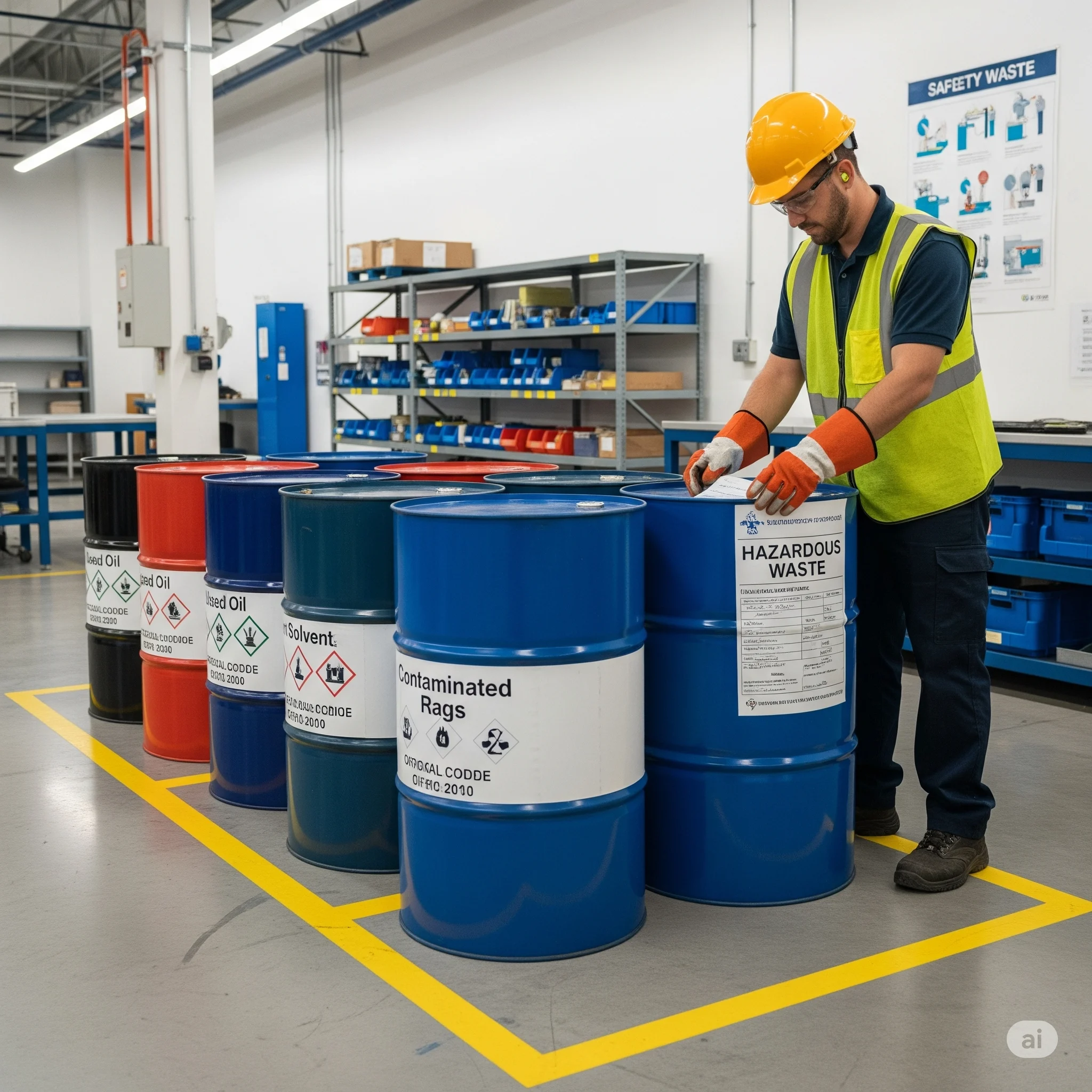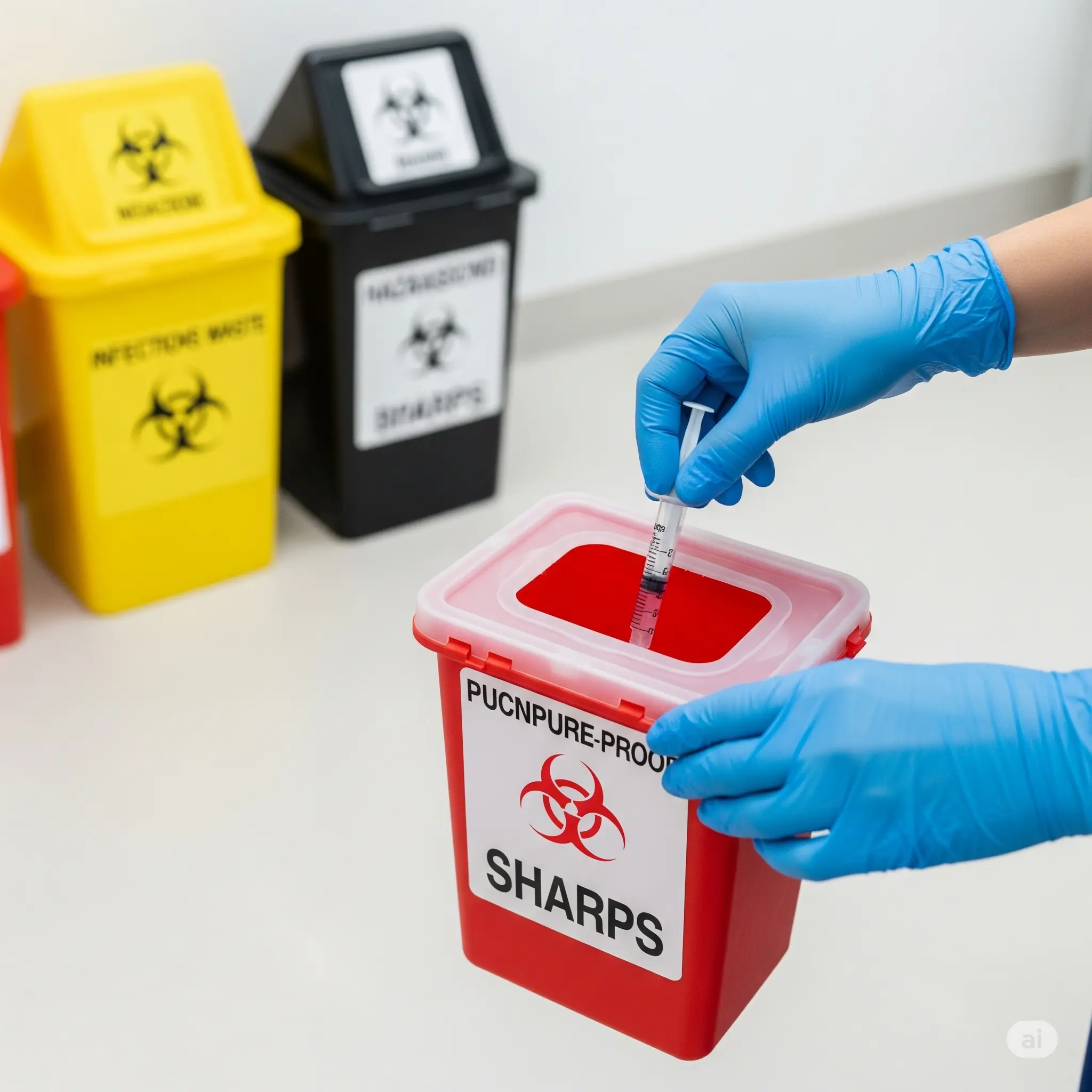Successful scheduled waste management begins long before the collection truck arrives at your facility. The procedures you implement on-site for handling, storing, and documenting your waste form the critical first link in a compliant chain. Getting this foundation right not only ensures safety and regulatory adherence but also streamlines the entire disposal process.
This guide provides a clear, step-by-step process for managing scheduled waste within your facility, based on DOE best practices. Mastering these steps empowers your team, minimizes risk, and prepares you for a seamless partnership with your chosen waste management provider.
Step 1: Identification and Classification – Know Your Waste
The most critical first step in managing scheduled waste is knowing exactly what you are generating. You cannot manage, store, or dispose of waste correctly if you have not properly identified it. According to DOE regulations, businesses have a legal responsibility to “identify and classify the types of scheduled waste generated”.
This process involves:
- Auditing Your Processes: Review your industrial activities (e.g., manufacturing, machinery maintenance, cleaning) to identify every point where waste is generated.
- Matching to DOE Codes: Match each waste stream—be it used solvents, oil sludge, contaminated rags, or e-waste—to the official waste codes listed in the Environmental Quality (Scheduled Wastes) Regulations.
- Creating a Waste Inventory: Maintain a detailed log or inventory of all scheduled waste generated on-site. This document should include the waste code, the source process, the date of generation, and the quantity.
Step 2: Safe and Segregated Storage – Preventing Contamination and Accidents
Once waste is classified, it must be stored in a manner that prevents harm to people and the environment. Proper storage is essential to prevent leaks, spills, and dangerous chemical reactions from cross-contamination.
Follow these best practices for on-site storage:
- Designate a Secure Area: Establish a specific, clearly marked area for scheduled waste storage. This area should be secure, inaccessible to unauthorized personnel, and ideally covered to prevent rainwater contamination.
- Use Appropriate Containers: Use containers that are compatible with the waste they hold (e.g., corrosion-resistant drums for acids). Ensure all containers are in good condition, properly sealed, and stored upright on a non-porous surface like concrete.
- Segregate Incompatibles: Never store waste types that could react dangerously with one another in the same area. For example, flammable materials should be kept separate from oxidizers.
- Implement Spill Containment: The storage area should have secondary containment measures, such as a bund wall or spill pallets, capable of holding the volume of the largest container in case of a leak.
Step 3: Proper Labeling and Documentation – The Key to Traceability
Clear and accurate labeling is a legal requirement and the key to a traceable, compliant waste management system. Every single container of scheduled waste must be properly labeled from the moment waste is first placed inside it.
According to DOE guidelines, each label must contain essential information, including:
- Waste Code: The official DOE code for the waste (e.g., SW 305 for spent lubricating oil).
- Date of Generation: The date when the waste was first generated or the container was started.
- Waste Properties: Clear indication of any hazards (e.g., Flammable, Corrosive, Toxic).
- Source Information: The name and address of your facility and the specific department or process that generated the waste.
This meticulous labeling is the start of the “paper trail” that provides a complete history of the waste, ensuring accountability and compliance throughout its journey.
Step 4: Preparing for Collection – A Seamless Handover
The work you do in the first three steps culminates in a smooth, safe, and efficient collection process. When your waste is properly classified, securely stored, and accurately labeled, the handover to your waste management partner becomes a seamless final step in your on-site duties.
Industrial managers are experts in their own fields but are not always experts in the nuances of waste regulations. This creates a natural “knowledge gap.” By providing practical, educational content like this guide, we aim to fill that gap, empowering you to manage your responsibilities with confidence. When you master your on-site processes, you build the strong foundation necessary for a successful partnership. This is where a professional service provider takes over. A reliable partner’s “professional team arrives on schedule with specialized equipment” to manage the transport and final disposal, trusting that the waste has been expertly prepared by you, the client.
Conclusion: Your Role in a Compliant Partnership
Mastering your on-site scheduled waste management is not just about following rules; it’s about taking ownership of your environmental responsibility and creating a safer workplace. By diligently following the steps of Identification, Storage, Labeling, and Preparation, you fulfill your crucial role in the compliance chain.
You create the foundation for seamless and compliant disposal. Once you’ve done your part, let us handle the rest. Contact Ridge Amber to schedule your collection and complete the chain of compliance.




